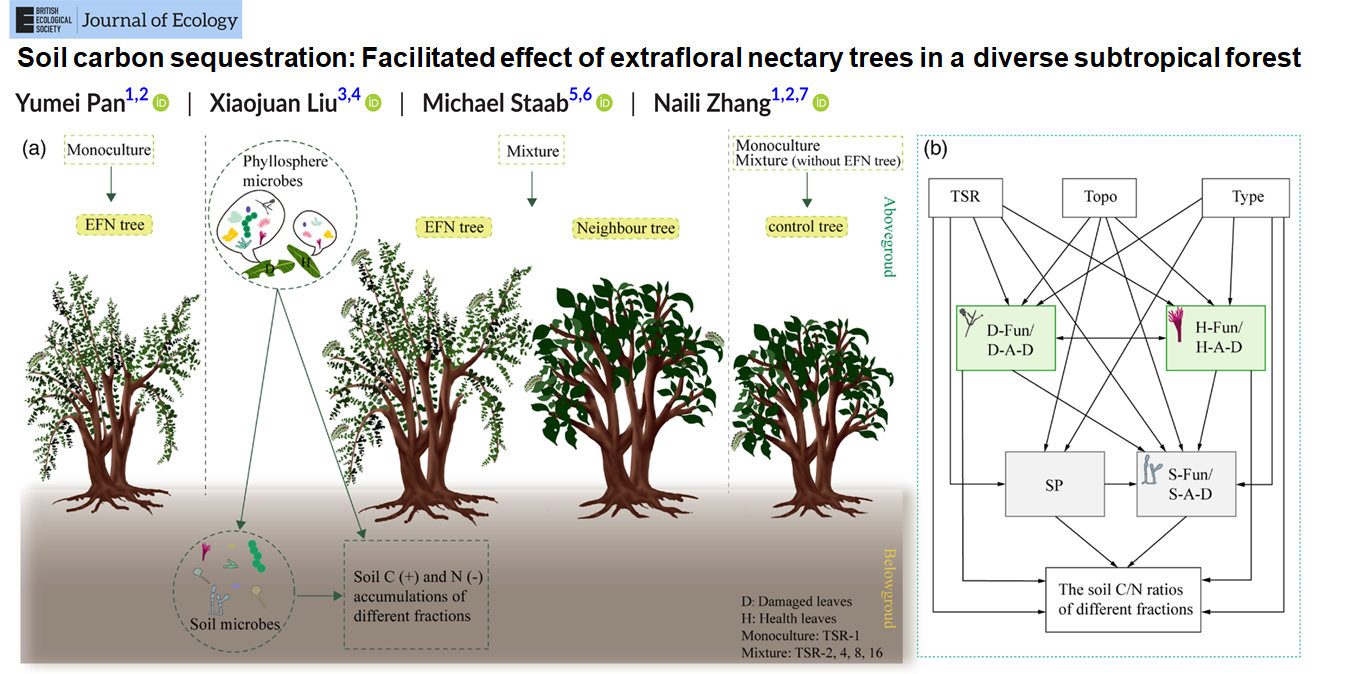-
Understanding soil organic matter dynamics is essential for evaluation of the carbon (C) sequestration potential of soils, a critical factor in mitigating climate change. However, the dynamics of soil C processes under the canopy of extrafloral nectary (EFN) trees that are widely distributed in subtropical forests remain poorly explored, particularly in the context of declining tree diversity.
-
In this study, we investigated EFN tree effects on the soil C and nitrogen (N) fractions in forest communities characterized by five levels of tree species richness (TSR, i.e. one-, two-, four-, eight- and 16-tree species). Emphasis was placed on the roles of the phyllosphere and soil functional fungal guilds associated with the target and neighbouring trees.
-
The results revealed that the proportion of EFN trees negatively affected the C content of particulate organic matter (POM), the C/N ratios of the POM and mineral-associated organic matter (MAOM), as well as the POM-to-MAOM ratio. The peak soil C/N ratios across all fractions, as well as the POM-to-MAOM ratio, shifted from four-tree species to eight-tree species under the canopy of EFN trees and their neighbouring non-EFN trees. The POM C/N ratio was directly as-sociated with the alpha diversity of soil functional fungi and indirectly associated with the alpha diversity of functional fungi colonizing damaged leaves. In addition, the C/N ratios of the POM and MAOM, and the POM-to-MAOM ratio were potentially mediated by the complexity, stability and potential keystone taxa of fungal co-occurrence networks colonizing leaves and in the soil. The changes in microbial communities are likely driven by the interaction between EFN trees and herbivorous insects.
-
Synthesis. These findings demonstrate a positive response of soil C sequestration under extrafloral nectary (EFN) tree canopies. By highlighting the significance of EFN tree–phyllosphere/soil fungi associations and their role in shaping the effect of tree species diversity, this study contributes to a comprehensive understanding of the mechanisms by which above-ground–below-ground synergies govern soil C sequestration in a subtropical forest.
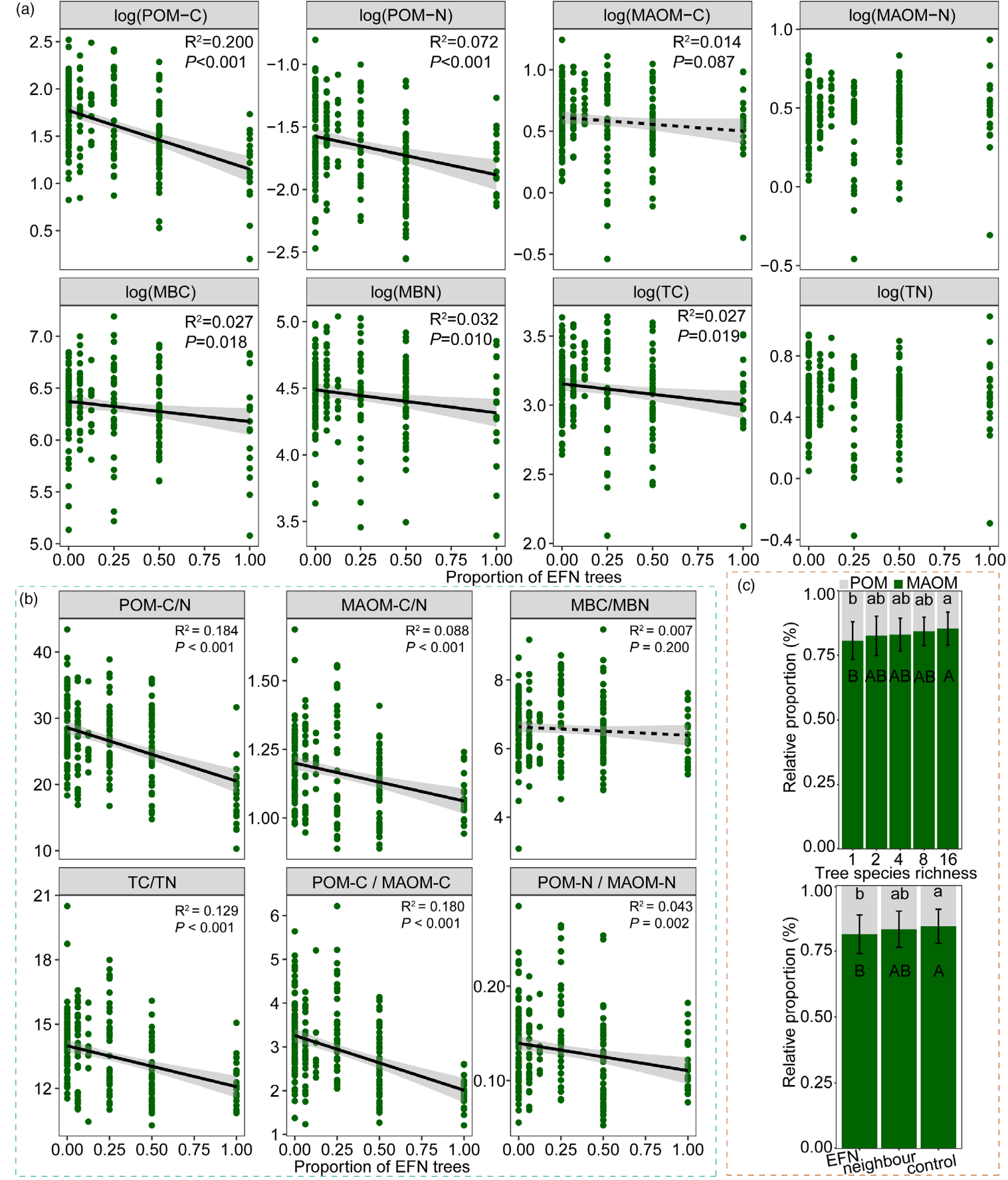
Figure 1. (a) Relationships between the proportion of EFN trees and the C and N contents of particulate organic matter (POM-C, POM-N), mineral-associated organic matter (MAOM-C, MAOM-N), microbial biomass (MBC, MBN) and total C and N contents (TC, TN). (b) Regressions between the proportion of EFN trees and the C/N ratios of POM (POM-C/N), MAOM (MAOM-C/N), MBC/MBN, TC/TN and the POM-to-MAOM C and N ratios (POM-C/MAOM-C, POM-N/MAOM-N). (c) the response of the relative proportion of POM and MAOM fractions in the soil sample to tree species richness and tree types.
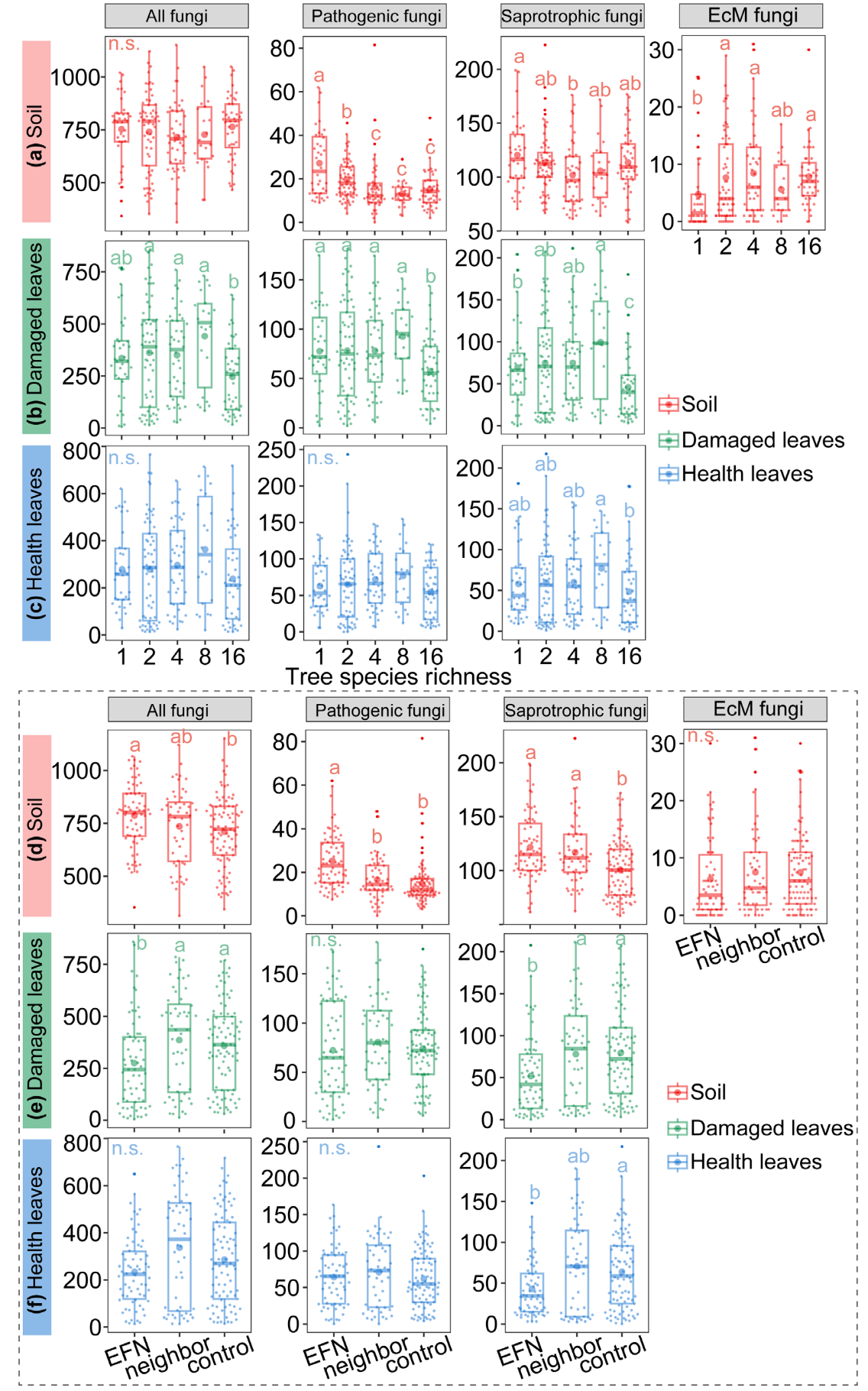
Figure 2. Effect of (a–c) tree species richness and (d–f) tree types (i.e. EFN, neighbour and control trees) on Chao1 index of phyllosphere fungi, putatively pathogenic and saprotrophic fungi colonizing soil, damaged and healthy leaves. Significance values were determined using the Wilcoxon test, and significant differences are indicated by different lowercase letters.
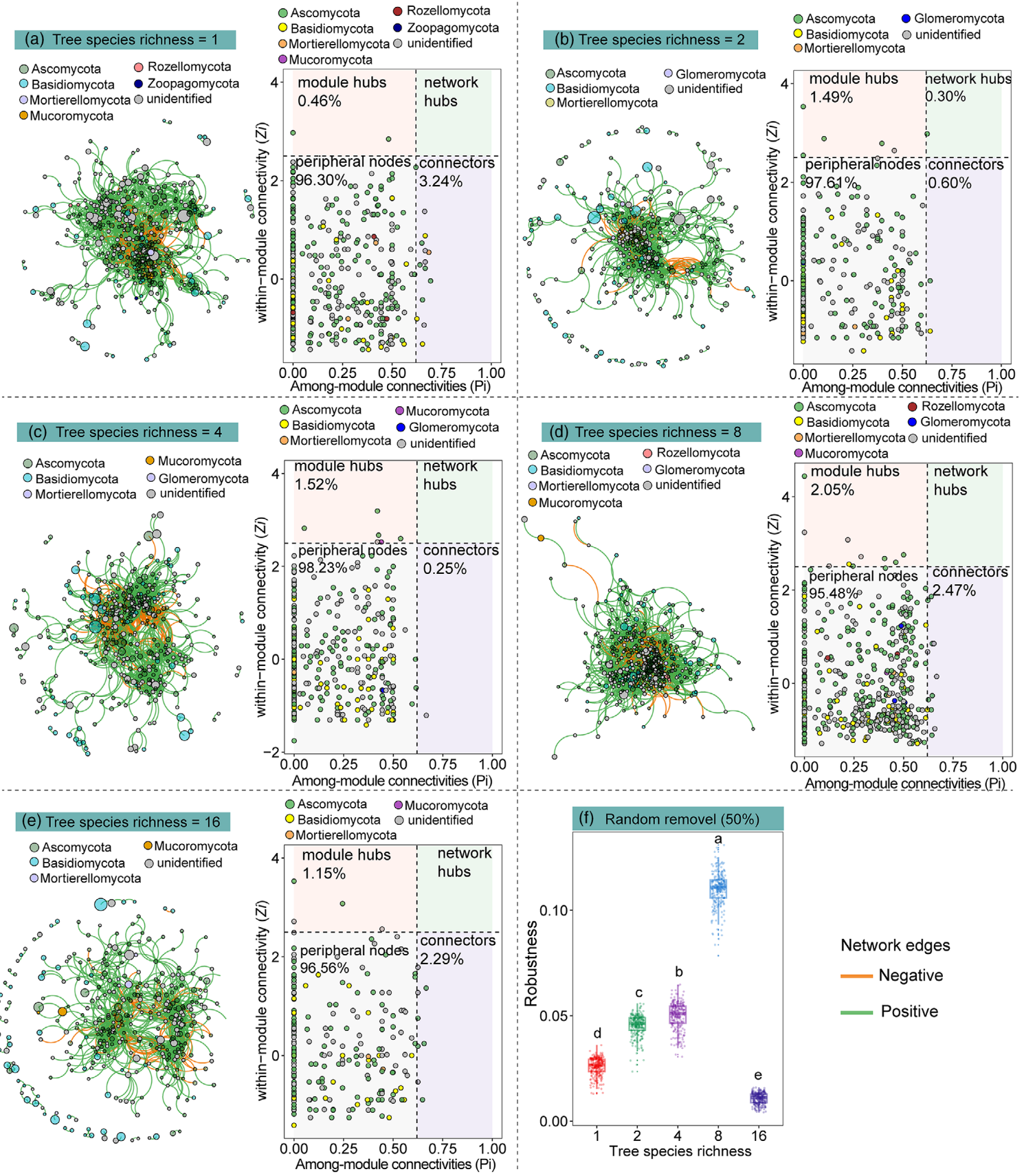
Figure 3. (a–e) Co-occurrence network, Zi-Pi plot and (f) network stability of soil fungal community among different tree species richness level.
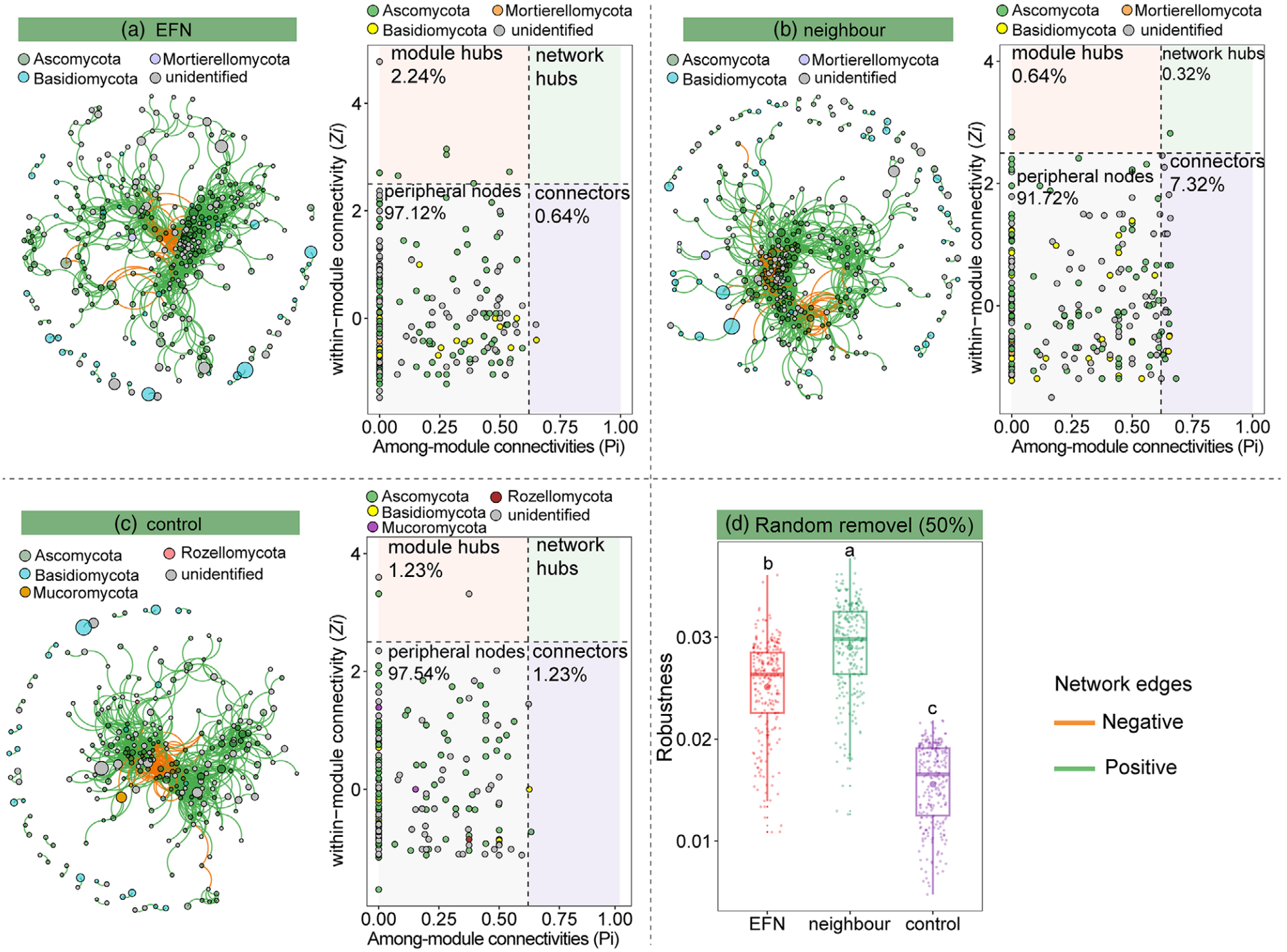
Figure 4. (a–c) Co-occurrence network, Zi-Pi plot and (d) network stability of soil fungal community among different tree types (i.e. EFN, neighbour and control trees).
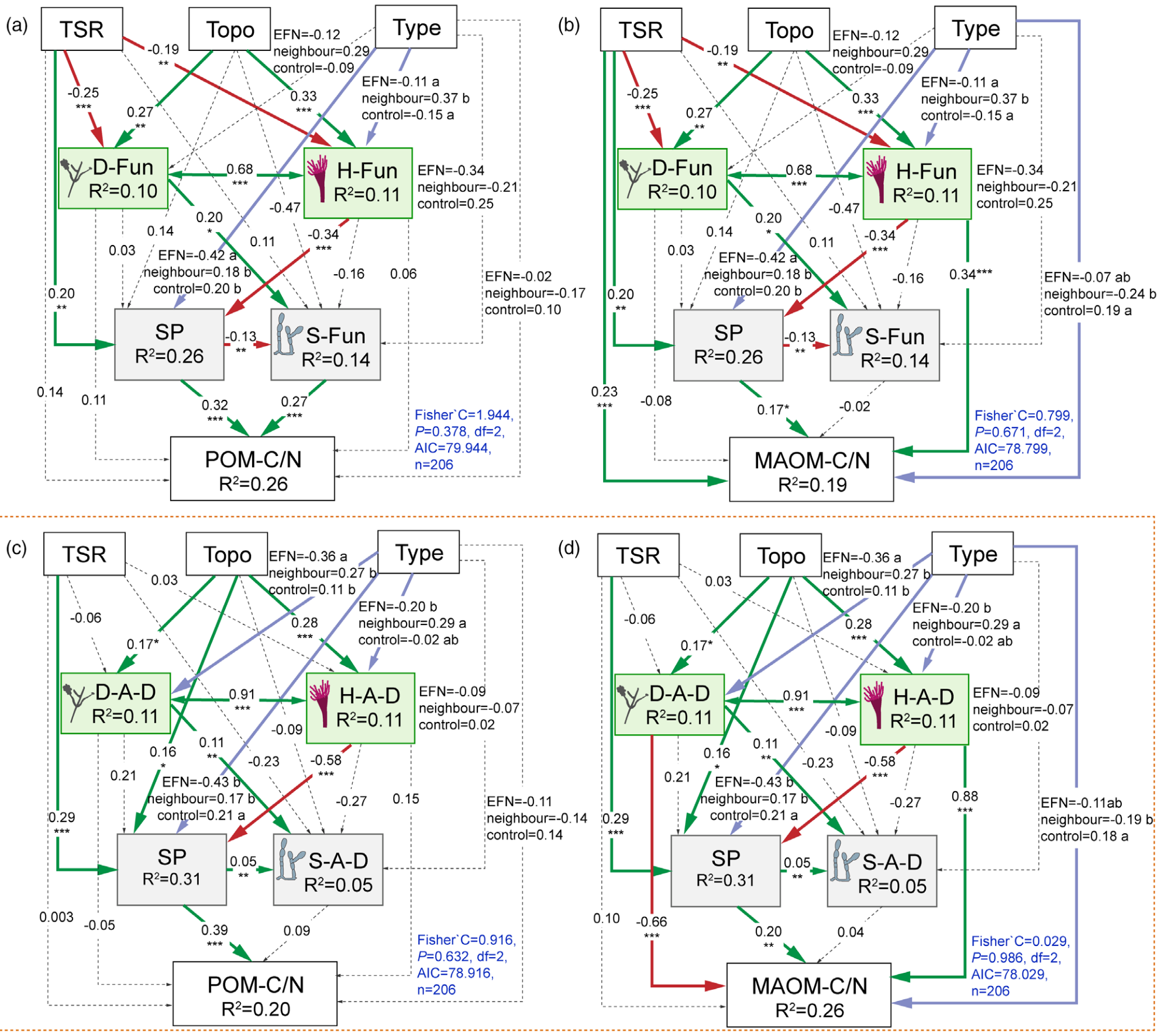
Figure 5. Direct and indirect drivers of the soil C/N ratios of different fractions. Based on piecewise structural equation model (SEM) accounting for the direct and indirect effects of TSR, tree types, topography, soil physiochemical properties and (a, b) the functional fungal guilds or (c, d) fungal co-occurrence network complexity (i.e. average degree) colonizing soil, damaged and health leaves on soil C/N ratios of particulate organic matter (POM-C/N), mineral-associated organic matter (MAOM-C/N).
Literature:
Yumei Pan, Xiaojuan Liu, Michael Staab, and Naili Zhang*. 2025. Soil carbon sequestration: Facilitated effect of extrafloral nectary trees in a diverse subtropical forest. Journal of Ecology. 113(8):2199-2219. https://besjournals.onlinelibrary.wiley.com/doi/10.1111/1365-2745.70088.
